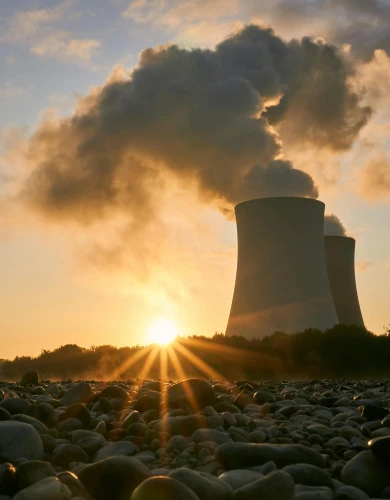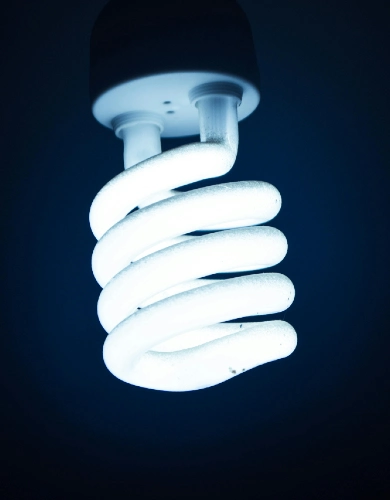Are floating offshore wind farms the future?
First, it was windmills. Then, onshore wind turbines generate electricity. Fast-forward a couple of decades, and we now have colossal offshore UK wind farms producing record amounts of renewable business energy.
Wind energy has gone a long way, but there is still room for improvement. Airbourne wind energy may help us harness energy from the best wind resources at high altitudes, but it is currently proving difficult to implement.
A more realistic alternative has arisen and hit the ground running with a number of commercial generators already online since 2017: floating offshore wind energy.
Not only can they tap into improved mid-sea wind resources, but they can be easily built onshore and towed to the location. But more importantly, it is a nascent industry backed by the colossal capital of large energy firms, who see it as a way to transition its offshore knowledge into green energy.
Contents
- Why do we need floating wind turbines?
- How do floating wind farms work?
- Commercial floating wind farms
- Floating wind power is expensive
- A channel for industry transition
- Alternative applications
- Conclusion
- External Resources
Why do we need floating wind turbines?
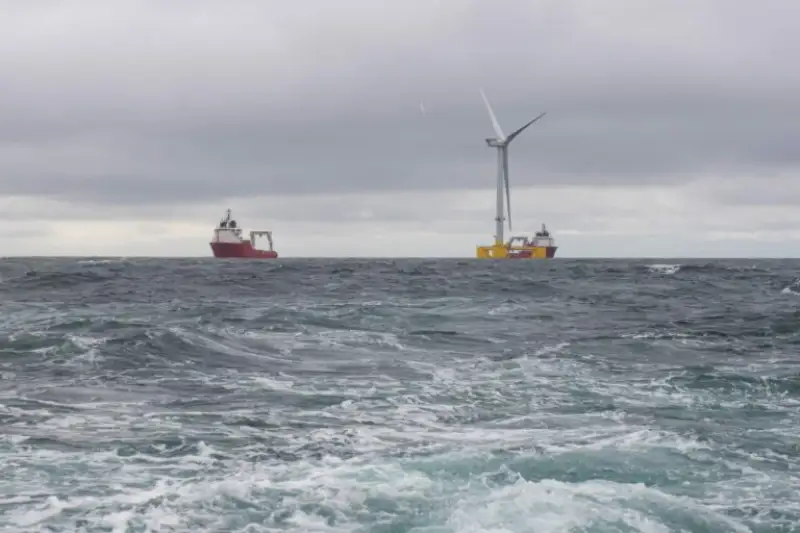
Wind energy is a cornerstone of the energy transition and is heavily endorsed by reputable international organisations like the IEA, who consider it key to achieving net-zero emissions by 2050. The wind is inexhaustible, and wind patterns are well-established across the globe.
Wind generators have also been evolving rapidly, with their levelised cost going down orders of magnitude over the last decades. However, there are still many limitations that may be overcome by using floating wind generators:
- There are limited viable sites where fixed onshore and offshore wind generators can be installed.
- Neither can take advantage of the superior wind resource further away from coastlines.
- They are unsuitable for mobile applications.
- The foundations of traditional offshore wind turbines have an environmental footprint in shallow marine environments.
- Both onshore and offshore generators are installed in plain sight, causing visual and noise pollution.
Let’s see these in more detail.
Expanding the wind farm frontier
Floating wind turbines solve the spatial constraints faced by both onshore and fixed-bottom offshore wind farms.
Onshore wind farms require exposed areas like hills, flat plains or coastlines to produce high power outputs, but many of these areas are unsuitable because they are populated or protected (i.e. wind turbines cause visual and noise pollution).
Offshore sites are also restricted to shallow waters with favourable ground conditions to sustain their foundations and the absence of shipping lanes or endangered marine ecosystems.
Floating platforms enable the expansion of wind energy into deeper offshore areas, which alleviates this land use issue.
Tapping superior wind resources
The high seas offer a superior wind resource because of the lack of obstructions such as buildings and terrain that create more turbulent and chaotic winds, unfavourable for wind generation.
The water depths render placing any foundations in these areas, which makes floating alternatives the only viable option to tap this resource (except maybe for some airbourne wind generators).
The Hywind floating wind farm in Scotland demonstrates this as it has been the most consistent producer of wind energy of all UK wind farms (i.e., it has the highest capacity factor).
Mobility of floating wind turbines
Fixed wind generators are optimal for producing electricity for the national grid and regional electricity distribution networks. Mobility gives no advantage when it comes to efficiency and capacity, meaning there is no use case here.
However, ‘nomadic’ aquatic infrastructure that requires a lot of electricity, like floating oil & gas platforms, could greatly benefit from having MegaWatt-scale electricity generation attached to it.
In general terms, mobility also eases the deployment of offshore turbines by enabling their assembly onshore, which is less difficult than doing this directly offshore.
Reduced environmental impact
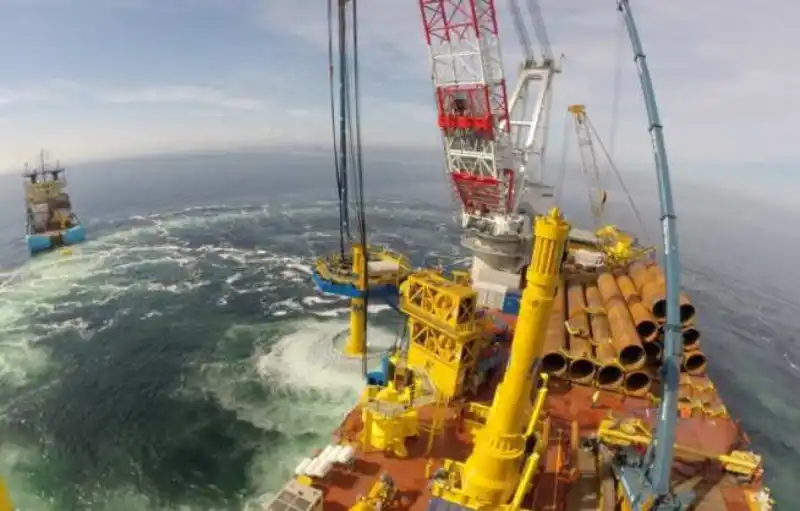
Offshore wind farm foundations require the disruption of shallow marine ecosystems. Deep piles must be drilled into the seafloor to fix the turbines into the ground, disturbing local species.
This is not a significant ecosystem impact compared to oil spills as the pile area is small and the foundations are inert, but floating turbines can more or less neglect this by avoiding foundations altogether and relying on a simple anchoring mechanism instead (like marine vessels).
However, some argue that the foundation structures of offshore wind turbines can create artificial reefs, creating new habitats that may promote biodiversity, particularly in shallow marine environments that have suffered degradation.
No exposure to visual and sound pollution
Floating wind farms are virtually invisible from the coastline so they are both visually non-intrusive and protected from media and social scrutiny, which has caused many problems for the installation of wind farms.
For example, the negative sentiment toward wind turbines among more conservative communities in the UK has encouraged a de facto ban on onshore wind farms in Britain since 2015.
How do floating wind farms work?
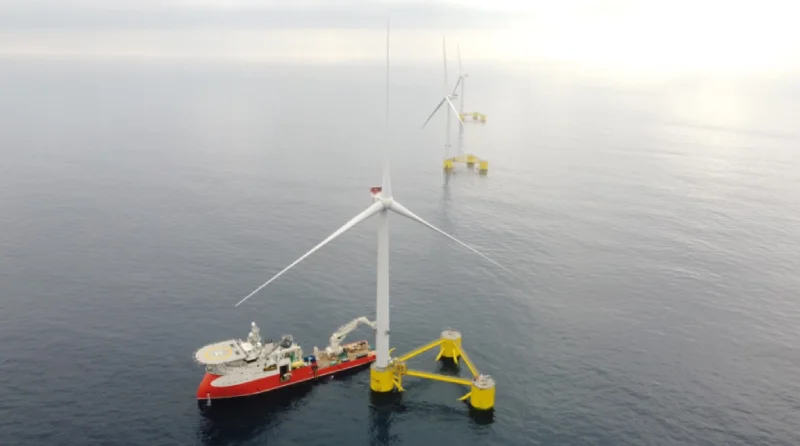
Floating wind turbines are self-explanatory: wind turbines that produce electricity afloat. However, several competing designs are being trialled, each with its own strengths and weaknesses.
The engineering details are outside the scope of this article, but in general, floating wind turbines rely on the following floater designs:
Floating devices
- Barge: Wind turbines deployed on a simple barge. It’s the simplest and cheapest design but is also the least stable and, therefore, least efficient.
- Spar-Buoy: Wind turbines deployed on cylindrical underwater ballasted buoys, analogous to those used in oil & gas platforms. They are stable and extremely mobile and, therefore, easy to tow.
- TLP: Tension-Leg Platforms are like barges that are held underwater by tensioned cables attached to the seafloor. These are very stable and suitable for the largest turbines but are expensive and not suitable for very deep waters.
- Semi-submersible: Wind turbines held aloft by semi-submersed platoons of different shapes and designs, making them both stable and mobile.
- Multi-turbine platform: A single platform that supports multiple turbines. This is cost-effective, and an attractive proposition when considering upcycling decommissioned oil & gas platforms into multi-renewable generators, potentially also harbouring floating solar, and tidal energy.
So far, only Spar-Buoy and Semi-Submersible technologies have been used in existing commercial floating wind farms, but all technologies are expected to be utilised in future to suit the different niches.
Connection to shore
One of the complicated aspects (and main criticisms) of floating offshore wind farms is the difficulty of transmitting the power generation on shore.
Without a doubt, long-distance interconnecting cables are required. Not only do these suffer from a single point of failure (a worry given the suspected attempts to sabotage undersea cables), but they also add to the initial capital costs of these projects.
There are conceptual designs for large-scale floating wind farms that involve a floating connection hub that provides a single connection point to the shore, meaning only a single, long-distance cable needs to be installed under the sea bed.
This raises some questions like can floating wind generators leverage existing international interconnectors for transmission? Can floating wind turbines also harbour floating gravitational energy storage systems?
Commercial floating wind farms
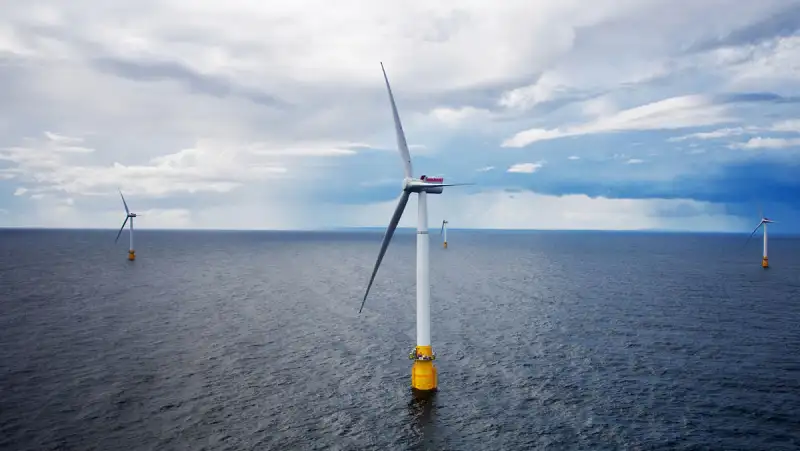
As of May 2023, three commercial floating offshore wind farms are operating. These are relatively small and may be considered pilot projects precursive to larger deployments.
Here is a table with their main characteristics 👇
| Project | Location | Capacity | Turbines |
|---|---|---|---|
| Hywind Scotland (2017) | 25km off Peterhead (Scotland) | 30 MW | 5x Siemens SG 6MW |
| WindFloat Atlantic (2020) | 20km off Viana do Castello (Portugal) | 25 MW | 3x Vestas 8.4 MW |
| Kincardine (2021) | 15km off Aberdeen (Scotland) | 50 MW | 5x Vestas 9.5MW |
Generally speaking, all three projects have so far been successful.
Hywind (Scotland) has seen a capacity factor of 52% during its operational life cycle, which is the highest of any wind farm in the UK! Also, it has successfully weathered large Atlantic winter storms that produced waves of up to ten meters in height.
Similarly, WindFlaot Atlantic (Portugal) has exceeded its expected power generation capacity, while Kincardine has been producing record amounts of floating electricity despite some technical failures on two of its units.
Their success is encouraging the proposal of more projects, with Hywind Tampen (Norway) already under construction to power two Norwegian offshore oil & gas platforms.
Japan has been exploring a massive floating wind farm off the coast of Fukushima (where the nuclear disaster happened, leaving a large gap in electricity production), and there have been several pilot projects off the coast of Maine (US), the Canary Island (Spain) and YangXi (China).
Floating wind power is currently very expensive
But despite the technical wins, the projects are currently multiple times more expensive than traditional wind generators, and it will take R&D and manufacturing investment to reduce the costs significantly.
On the plus side, offshore infrastructure expertise and interests lie with the oil & gas sector, which has large amounts of capital (especially after the recent energy price hike!) and a vested interest in developing this technology…
Not only because of the potential for these floating devices to power its platforms but also as part of its transition into low carbon electricity generation…
A channel for industry transition
Floating wind turbines can serve the oil & gas industry in two ways:
- Provide reliable low-carbon electricity for its floating oil & gas platforms, which currently run using mainly the extracted gas, which makes the process more expensive due to carbon taxation.
- Strategically transition into the lowest-hanging low-carbon energy generation. Recall that the oil & gas sector has worked with floating infrastructure since the 1970s and basically has the expertise and supply chains at its disposal (manufacturers, ports, etc.).
The use of existing fossil fuel based energy assets (platforms, pipelines, supply chains) is essential to the energy transformation because energy firms are a cornerstone to the global financial system, and their failure would be catastrophic (i.e. a large part of your pension scheme is probably invested into large business energy suppliers).
Floating wind power is certainly a better use-case of existing oil and gas resources than Direct-Air Capture (which we deemed as a textbook example of greenwashing).
Therefore, it is no surprise that oil & gas companies with large amounts of offshore assets are the principal stakeholders in floating offshore projects.
For instance, Statoil (Norway’s national oil & gas company) was the main investor in Hywind Scotland under its subsidiary Equinor, while Repsol (Spanish oil giant) is a primary stakeholder in WindFloat Atlantic.
Total (France) and Shell (Netherlands) are also funding demonstration projects off the Mediterranean coast of France and off the North Sea and will no doubt participate in commercial farms in future.
Alternative applications
Floating offshore has the advantage of being mobile, which makes it a very adaptable technology:
- When the transmission back to land becomes uneconomical, floating wind turbines could power green hydrogen production and water desalination in different locations.
- It can be used as moving wind labs to test the wind resources of potential wind sites.
Conclusion
Floating wind energy is an exciting prospect to keep scaling wind power. Being able to tap into the best wind resources within vast unused areas of the ocean with little environmental footprint is promising.
We’d be able to produce a lot of electricity from areas invisible to humans, all while providing another avenue for the energy industry to transition into this new era (I’d like to have a pension when I’m old, thank you).
However, until costs don’t come down, we think it is worth following the free market price signal and building the cheapest, fastest, and lowest-carbon electricity generation as fast as possible, as we cannot negotiate terms with climate change!
What you may be able to negotiate, though, are your UK business electricity prices and business gas rates.
